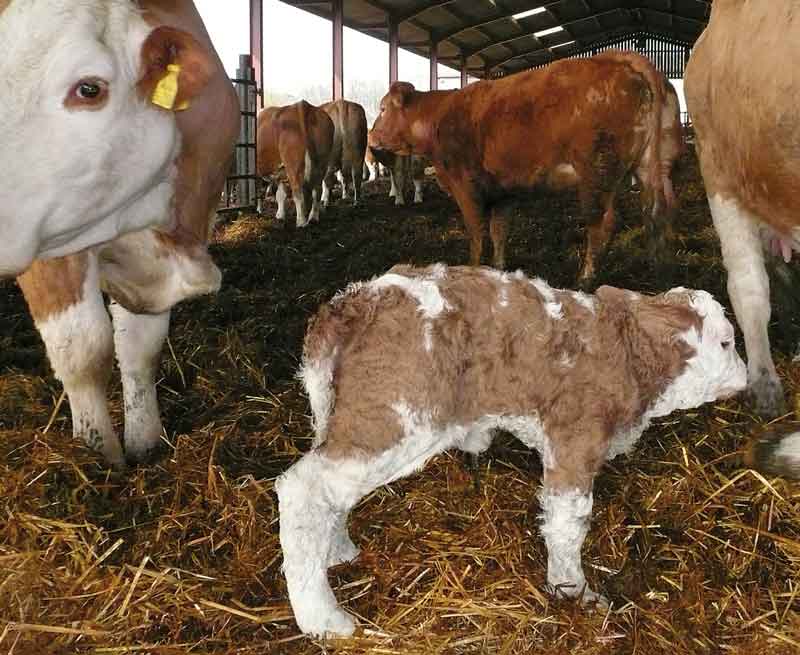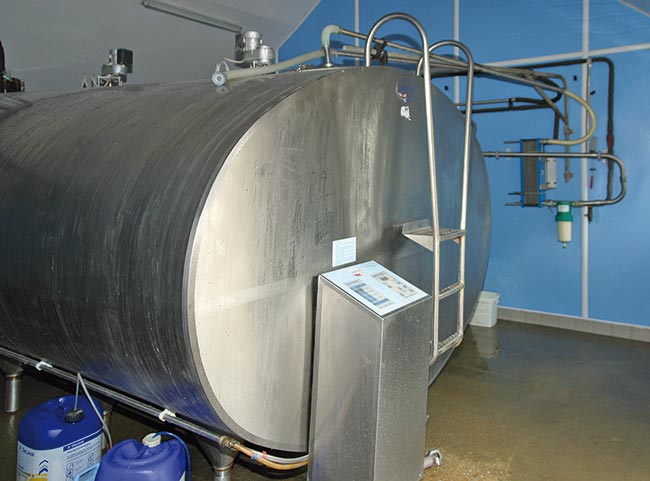1 Feb 2016
Structured approaches to managing and preventing BVD
Jon Parsons and Jon Mouncey look at herd diagnostics used to identify the disease, persistently infected animals, common entry into the herd, biosecurity, vaccination and health schemes.

Persistently infected animals can either appear stunted and illthrift or clinically normal.

Bovine viral diarrhoea (BVD) remains one of the most important infections affecting the UK cattle population and can cause infertility, abortion, birth defects and immunosuppression.
Many countries already have nationwide eradication or control programmes in place. Understanding the disease is key to being able to implement any control programmes or prevent entry of it into a naive herd.
BVD is a pestivirus with a cytopathic and non-cytopathic form; the virus can be spread in secretions, including aerosols, aborted material and semen. The reservoir of infection is often a persistently infected (PI) animal, which occurs when a fetus in a naive dam is infected in the first 110 days of gestation while forming an immune system, so BVD antigen is recognised as a self-antigen. From its birth, a PI animal will be a constant source of infection, secreting BVD virus throughout its whole life. A PI animal will always give birth to a PI calf, thus perpetuating infection within the herd.
Infection after 110 days of gestation can result in abortion, birth of calves with congenital defects including cerebellar ataxia, and ocular defects or birth of normal calves.
PI animals can appear stunted and ill-thrift compared to their peer group, and die or be culled in early life; however, some appear clinically normal and live within the herd for many years undetected. When a PI animal meets cytopathic BVD (possibly mutated non-cytopathic virus) and becomes infected, it can develop mucosal disease with sloughing of mucosal surfaces and eventual death.
Type one and two
Many of us are familiar with the pathogenesis of BVD type one, but in recent years we have also seen the emergence of BVD type two in Europe.
BVD type two is a common threat in North America and is emerging in Europe. Outbreaks have been reported across Europe since 2013 (not yet in the UK), and with a thriving import market and increasing numbers of cattle being imported (58,860 in 2013 compared to 47,186 in 2012; CHAWG, 2014), the risk of importing BVD type two is real. The clinical signs seen in type two outbreaks are generally more severe with fever, diarrhoea, respiratory disease, mucosal erosions and rapidly progressing to death with mortality typically between 20% to 50% (Doll, 2013).
Common diagnostic tests detect both BVD type one and two and, to determine between the two types, PCR analysis or virus isolation is needed.
Management
Management of BVD focuses on identifying any PI animals and removing the source of infection, biosecurity and vaccinating at-risk animals to protect the fetus from becoming a PI animal, or abortion and congenital defects.
Identification of herd status
When approaching a herd with a questionable BVD status it is essential to perform the correct diagnostics to properly identify BVD status. This will differ for herd type and history of vaccination.
For the dairy herd, bulk tank milk can be tested for BVD antibody and/or BVD virus. In a naive unvaccinated herd, testing for both will give a good idea of initial herd status. In a vaccinated herd, testing for the BVD antibody is less useful, thus testing for the virus can be used to identify if any animals contributing to the tank on that day of the sample are infected or PI animals. Whenever bulk tank monitoring is undertaken it is essential to remember any animals not contributing to the bulk tank (animals on treatment withdrawal or dry cows) are not tested in a one-off sample.
For a beef-breeding herd, and in combination to bulk tank monitoring in a dairy herd, it is essential youngstock testing is carried out. Youngstock monitoring gives a picture of the most recently born animals in a herd. Maternal antibodies in calves can remain for the first nine months of life, thus testing a calf younger than this can give distorted results. Cohorts of animals in each separately managed group, from 9 to 18 months of age, can be tested for antibody to assess if they have met and seroconverted to BVD virus.
BVD status should not be based on one diagnostic test, it is important to build up a picture of diagnostics. In a beef herd, two youngstock cohorts should be carried out 12 months apart before declaring a herd is BVD free and bulk tank samples should be taken at least biannually alongside two youngstock cohorts 12 months apart.
Identifying persistently infected animals
Once one or more diagnostic tests have come back suggesting BVD infection on the farm, the next step is to hunt for any PI animals in the herd. When starting on a PI hunt it is always important to make sure everyone involved is aware a PI animal may have already died or left the herd and that a PI animal may not be identified. The best news is to not find a PI and then not need to cull any animals.
When testing for BVD there are options to test for BVD antibody or BVD virus/antigen. Table 1 explains how different animals in a herd may test.
| Table 1. How different cattle in a herd may test for the BVD antibody or virus/antigen | |||
|---|---|---|---|
| BVD antibody | |||
| Positive | Negative | ||
| BVD antigen | Positive | Possible in newborn calves with maternal antibody | Persistently or transiently infected animal |
| Negative | Exposed to BVD virus or vaccinated. Not a persistently infected animal | Naive animal | |
Often when hunting for a PI animal the approach is to bleed animals on the farm for BVD virus, and any animal testing negative cannot be a PI animal. However, often not all animals need to be sampled; in a dairy herd a negative bulk tank virus PCR will rule out PI animals contributing to the bulk tank on that day (depending on test sensitivity for the number of animals contributing to tank). Also, if an animal is sampled negative for the virus and the dam or granddam are still in the herd this rules them out, as PI animals always give birth to PI calves. Blood samples can be pooled into batches of 10 for antigen testing to reduce the cost.
With the advent of the tag and test method, which takes tissue samples from the application of an ear tag, the options for sampling have opened up. Tag and test can be carried out by the farmer, with veterinary involvement only in the testing regime and analysis of results. Tag and testing every calf born for a period of time can rule out a large population of the herd as being PIs and if any virus-positive calves are identified, their dams can be traced back and then tested. The caveat of this method is always that every calf born needs to be tested, including stillborn and aborted calves, so barren animals not calving, and importantly the bull, are never tested.
If a test comes back antigen positive then that animal may either be transiently infected or a PI. To confirm the animal is a PI it should be resampled in three weeks. A PI will still be antigen positive and antibody negative, but a transiently infected animal will have seroconverted and test antigen negative and antibody positive.
One of the most important factors when undertaking a PI hunt is considering the animals in utero. Any pregnant cow has the potential to be carrying a PI calf, so the testing regime must include these animals. Any PI animal identified should immediately be removed from the herd.

Prevention
Summary
BVD is undoubtedly one of the most important infectious diseases in the UK cattle population. It is essential farmers and vets are fully aware of the pathogenesis and epidemiology of the disease and that structured biosecurity, monitoring and investigations are carried out.
